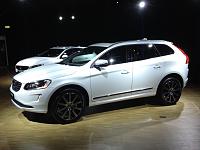Welcome to the Auto Repair Manuals.
Volvo: can you tell what it is yet?
5 stars based on
1 reviews
-
 Volvo: can you tell what it is yet?
Volvo: can you tell what it is yet?

Similar Threads
-
By Auto News in forum Avtomir - miscellaneous
Replies: 0
Last Post: 31.01.2014, 02:40
-
By Auto News in forum Avtomir - miscellaneous
Replies: 0
Last Post: 29.01.2014, 02:10
-
By Auto News in forum AutoNews
Replies: 0
Last Post: 27.01.2014, 14:35
-
By Auto News in forum News
Replies: 0
Last Post: 13.02.2013, 20:21
-
By Road&Track in forum News
Replies: 0
Last Post: 29.01.2011, 01:10



 LinkBack URL
LinkBack URL About LinkBacks
About LinkBacks